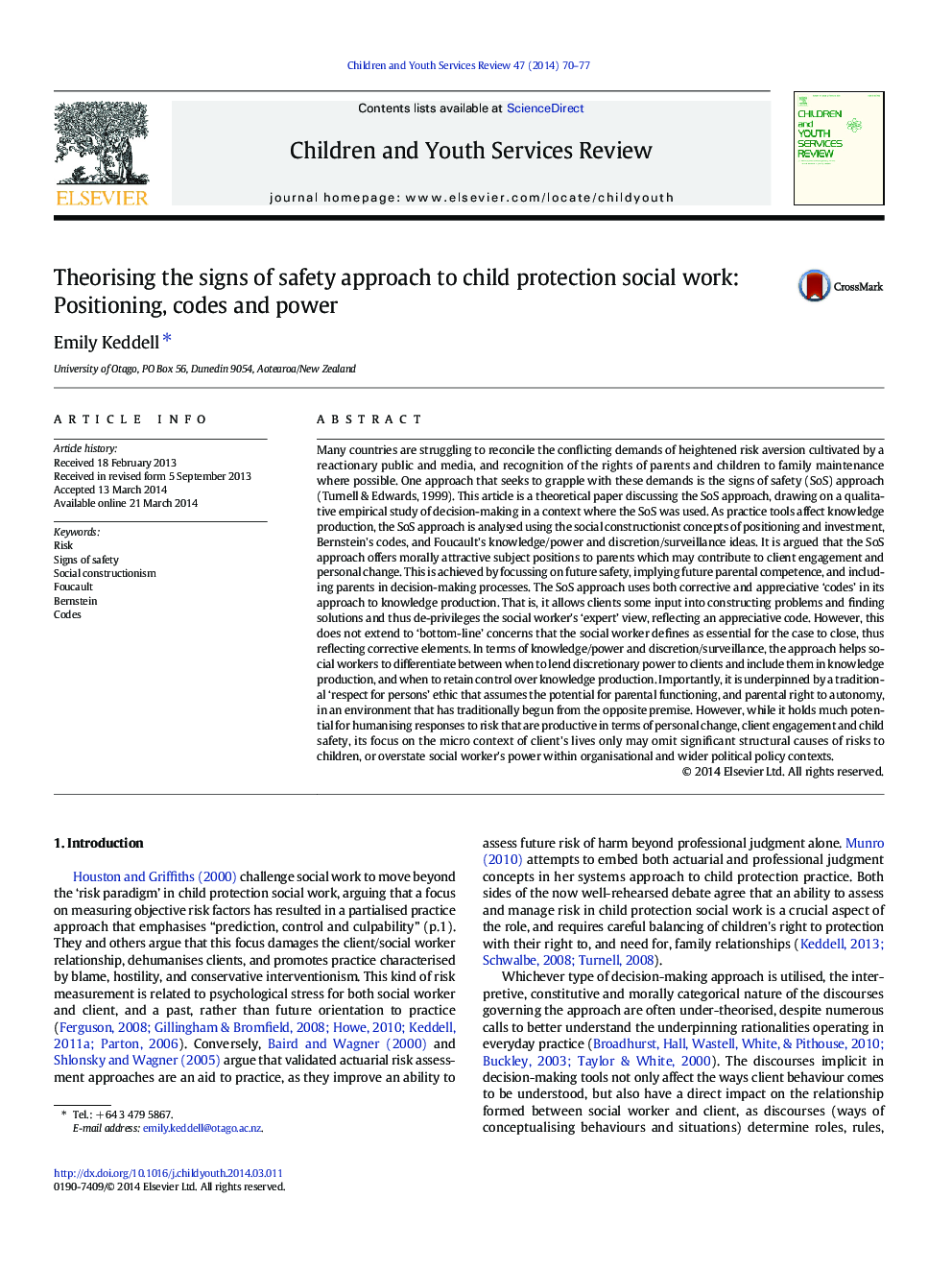| کد مقاله | کد نشریه | سال انتشار | مقاله انگلیسی | نسخه تمام متن |
|---|---|---|---|---|
| 346047 | 617789 | 2014 | 8 صفحه PDF | دانلود رایگان |
• The SoS approach includes safety in the construction of client's ‘riskiness’.
• The SoS offers clients morally attractive subject positions for investment.
• It constructs risk in ways that reflect both corrective and appreciative ‘codes’.
• The SoS has a ‘respect for persons’ ethic that guides discretionary power decisions.
• Structural contributors to risk are not targeted in the SoS approach.
Many countries are struggling to reconcile the conflicting demands of heightened risk aversion cultivated by a reactionary public and media, and recognition of the rights of parents and children to family maintenance where possible. One approach that seeks to grapple with these demands is the signs of safety (SoS) approach (Turnell & Edwards, 1999). This article is a theoretical paper discussing the SoS approach, drawing on a qualitative empirical study of decision-making in a context where the SoS was used. As practice tools affect knowledge production, the SoS approach is analysed using the social constructionist concepts of positioning and investment, Bernstein's codes, and Foucault's knowledge/power and discretion/surveillance ideas. It is argued that the SoS approach offers morally attractive subject positions to parents which may contribute to client engagement and personal change. This is achieved by focussing on future safety, implying future parental competence, and including parents in decision-making processes. The SoS approach uses both corrective and appreciative ‘codes’ in its approach to knowledge production. That is, it allows clients some input into constructing problems and finding solutions and thus de-privileges the social worker's ‘expert’ view, reflecting an appreciative code. However, this does not extend to ‘bottom-line’ concerns that the social worker defines as essential for the case to close, thus reflecting corrective elements. In terms of knowledge/power and discretion/surveillance, the approach helps social workers to differentiate between when to lend discretionary power to clients and include them in knowledge production, and when to retain control over knowledge production. Importantly, it is underpinned by a traditional ‘respect for persons’ ethic that assumes the potential for parental functioning, and parental right to autonomy, in an environment that has traditionally begun from the opposite premise. However, while it holds much potential for humanising responses to risk that are productive in terms of personal change, client engagement and child safety, its focus on the micro context of client's lives only may omit significant structural causes of risks to children, or overstate social worker's power within organisational and wider political policy contexts.
Journal: Children and Youth Services Review - Volume 47, Part 1, December 2014, Pages 70–77
